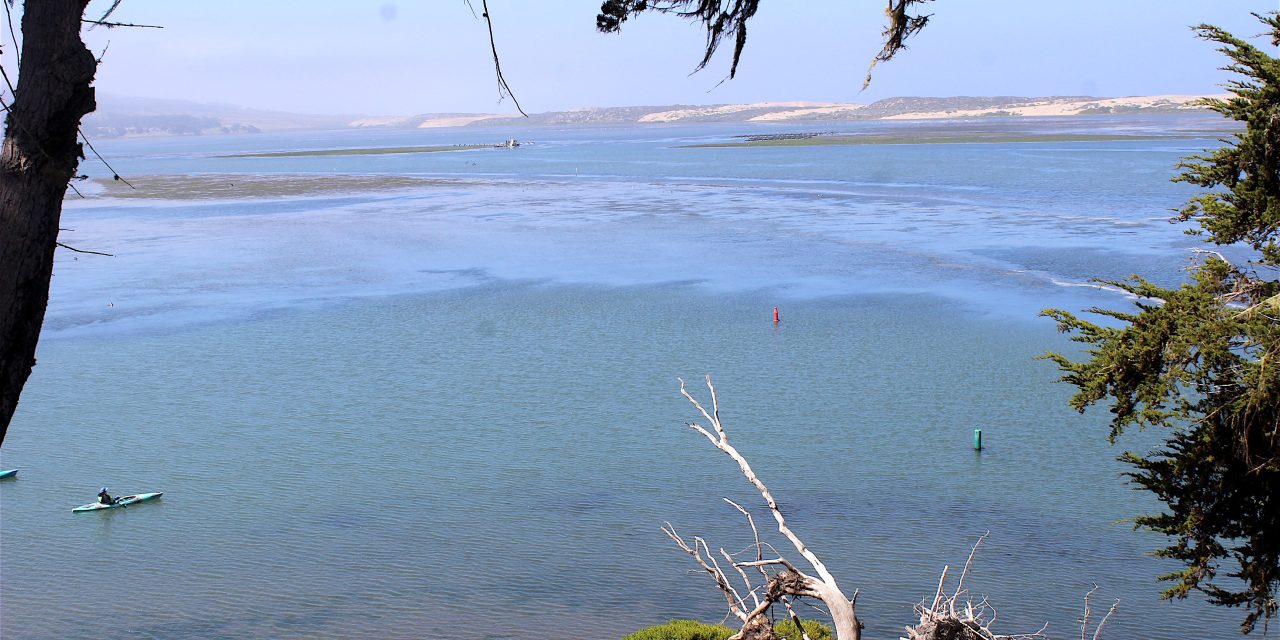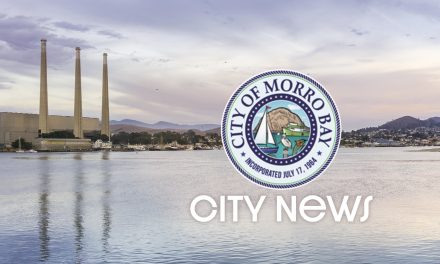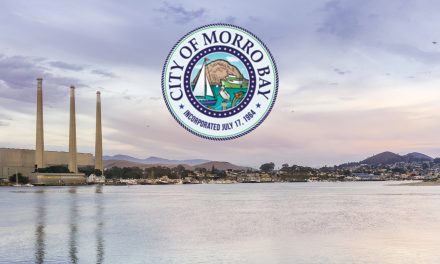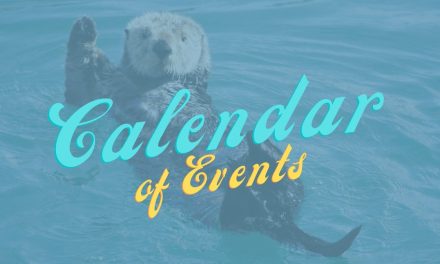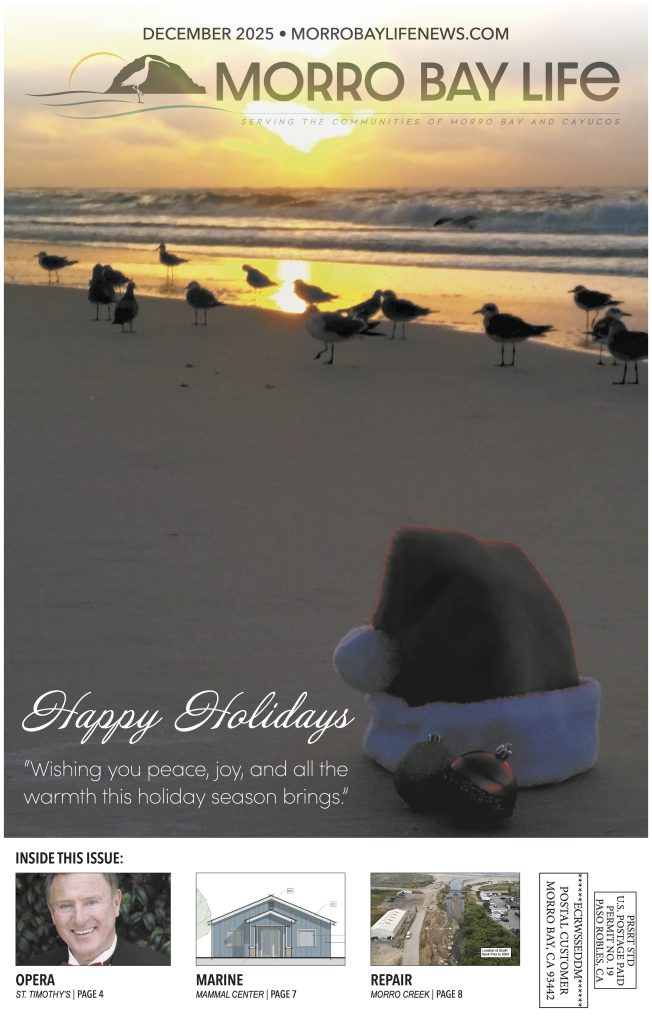Grassroots effort that launched a national estuary designation in 1996 celebrates decades of conservation
The agency charged with protecting the Morro Bay National Estuary is gearing up to celebrate its 30th anniversary.
Formed after a yearslong, grassroots effort by environmental activists in Los Osos and Morro Bay, who formed the nonprofit Bay Foundation, they were able to get Morro Bay added to the list of national estuaries under the Environmental Protection Agency (EPA), and authorized by Congress under the Clean Water Act.
According to the EPA website, “The NEP is a non-regulatory program established by Congress under section 320 of the Clean Water Act in 1987 to pioneer a broad and innovative approach to respond to threats to estuaries.
“The National Estuary Program is an EPA place-based program to protect and restore the water quality and ecological integrity of estuaries of national significance. Currently, 28 estuaries located along the Atlantic, Gulf, and Pacific coasts and in Puerto Rico are designated as estuaries of national significance.”
Each of the 28 National Estuaries came into being the same way Morro Bay did — through a push by local people. “These NEPs,” reads the EPA site, “were selected after national solicitations seeking nominations to the program and are located in a variety of institutional settings, including state and local agencies, universities and individual nonprofits. In overseeing and managing the national program, EPA provides annual funding, national guidance and technical assistance to the local NEPs.”
It should be noted that Morro Bay was also the first recognized state estuary.
The Bay Foundation was the catalyst for starting the local program and won NEP designation in 1996 after several years of strong lobbying.
Executive Director Melodie Grubbs is the current leader of the MBNEP and the seventh in a line of executive directors to lead the organization. Others included Dave Paradies, Melissa Mooney, Mike Multari, Dan Berman, Adrienne Harris, and Lexie Bell.
“I follow in the footsteps of a group of strong, dedicated leaders who helped shape the Program over the past 30 years,” Grubbs said. “Each brought a different perspective and helped grow the program into what it is today, a trusted, science-based, community-driven organization. I’m honored to build on that legacy.”
When it started, the main concern was rapid sedimentation of the estuary, and sought ways to slow this down if not end it entirely. Over the years, they’ve had many programs within the NEP, including conservation of open lands. The core mission hasn’t changed much.
“Our mission remains focused on protecting and restoring the Morro Bay estuary and its watershed,” Grubbs said, “but our work has broadened over the years.
“In the early days, rapid sedimentation and the loss of back bay habitats were key concerns. That issue is still on our radar, but today we approach the health of the estuary more holistically, looking at how land use, water quality, habitat, and climate change all interact across the watershed.”
It started as a means to figure out how to protect the estuary through good science and that hasn’t changed. “Our work,” Grubbs said, “is guided by science, shaped by local knowledge, and constantly evolving through adaptive management. We are always learning, and we adjust our priorities and strategies based on new data, conditions on the ground, and the needs of the community.”
Conservation of open land in the watershed — essentially the Los Osos and Chorro valleys — is still on their priority list. Though they don’t actually acquire lands, they do assist other agencies, like the Land Conservancy, conserve the land.
“Conserving open space and working lands in the watershed is still an important tool for protecting water quality and habitat,” Grubbs said. “While we are not a land trust, we regularly collaborate with local and regional partners who lead conservation efforts.
“We support those projects where we can add value, but we do not currently have any active parcel negotiations in Chorro or Los Osos valleys.”
When it first started, the NEP had a few growing pains with some issues that might be expected of any brand new concept or organization. Before the Bay Foundation and the NEP, the only agency actively trying to help the estuary was the Regional Water Quality Control Board. Forming the Bay Foundation and in turn the NEP, helped organize and focus efforts. The structure now appears to work well. Grubbs explained how the NEP/Bay Foundation works now.
“The MBNEP is a place-based program that reflects the unique needs and values of this community,” she said. “It’s implemented locally by The Bay Foundation of Morro Bay, a nonprofit organization that serves as the host entity.
“While we receive core funding and guidance from the U.S. EPA, the strength of the program lies in its local leadership.”
The management structure has evolved too. “Our work is shaped by a Management Conference made up of representatives from government agencies, scientific institutions, nonprofit groups, landowners, and community members, including voices from the fishing community, agriculture, and recreation,” Grubbs said. “This model ensures that the program is both grounded in science and responsiveness to local priorities.”
The relationship between The Bay Foundation and the NEP has become more intimate. “The Bay Foundation of Morro Bay is the nonprofit that carries out the work of the MBNEP,” Grubbs said. “So when you see us referred to as ‘The Bay Foundation of Morro Bay doing business as the MBNEP,’ that reflects the legal structure of the organization. Functionally, we are one and the same.”
The federal government’s role continues to be key, especially with the current movement to cut government down through programs like DOGE. The new EPA administrator, Lee Zeldin, is onboard with making cuts, too, but the hit hasn’t shown up locally, yet.
“We are keeping a close eye on the federal budget process,” Grubbs said. “The EPA has proposed reductions to several programs, including the National Estuary Program. While the budget is not final, we are planning ahead and exploring ways to ensure continued program stability.”
Because of the nonprofit Bay Foundation, the program is able to accept tax-deductible donations that could help backfill whatever cuts the Trump Administration and Congress come up with.
Meanwhile, they have a good crew on board to carry out the continuing mission of protecting the Morro Bay Estuary, which is among the smallest under the NEP’s protection.
“We have a strong and dedicated team in place,” Grubbs said. “Most of our positions are filled, and we are grateful for the expertise and passion our staff brings to this work.”
In the recent past, the estuary’s delicately balanced ecosystem saw a huge drop in eelgrass coverage in the bay, to the point where some feared it might disappear altogether. Eelgrass has been called the nursery of the ocean, because it is home to countless specialized species and serves as a nursery for many diverse fish species that come into the bay from the outer Pacific Ocean to lay their eggs. Like a tropical rainforest, eelgrass supports a myriad of species from fish, to crustaceans to overwintering Brandt geese. Various programs including transplanting of eelgrass shoots within the bay, have been tried in the past. Grubbs said they still focus on this vital habitat, but their methods have changed.
“Eelgrass is an important part of the estuary ecosystem, and we continue to monitor it closely,” Grubbs said. “The good news is that eelgrass coverage has rebounded significantly in recent years, so restoration efforts like transplanting are not currently needed.
“Instead, our focus has shifted to long-term monitoring, data collection and understanding the environmental conditions that support healthy eelgrass beds. This helps us stay prepared to respond if conditions change again in the future.”
One of their biggest and most successful programs has been a Volunteer Monitoring Program, which makes use of volunteers from the community that assist in collecting water samples and testing of water quality. Good science requires data, and when MBNEP was first formed 30 years ago, there was little scientific data available.
“Yes, our volunteer monitoring program is going strong,” Grubbs said. “It is one of our longest-running volunteer programs. Volunteers collect data on stream health across the watershed and in the bay, helping us track trends in nutrients, temperature, oxygen, and other indicators.”
Years ago, the focus was on so-called “nonpoint source pollution,” or pollutants that show up in surface waters or in the environment that have no easily identifiable source. The volunteer monitoring program is helping to figure out this pollution source.
“This work continues to focus on nonpoint source pollution and long-term watershed health,” Grubbs said. “Our data also supports the land management efforts of our partners such as private landowners, nonprofits, agencies, and others.”
With offices on the second floor at Marina Square, on the Embarcadero, the MBNEP also has a “Nature Center,” a small space with educational displays talking about the estuary and the watershed. Currently, Grubbs said they are working on some new stuff for the Nature Center, which is free to visit during business hours. At one time there was a fish tank filled with small fry steelhead on display in the Nature Center, but they had to remove it.
“We are in the process of updating our Nature Center exhibits to reflect current science and to create more interactive and engaging experiences,” Grubbs said. “The fish tank was retired a couple years ago due to maintenance challenges.
“Our new exhibits will focus on estuary habitats, species, and ways for visitors to get involved in protecting the bay. We hope to have a new eelgrass-focused interactive exhibit installed by the end of the year.”
As part of its original mission, the MBNEP was charged with drafting a Comprehensive Conservation and Management Plan or CCMP, which it completed in the 1990s, and has updated a few times since then through a “State of the Bay” report.
“We have begun working on the next ‘State of the Bay’ report, which compiles scientific data on the Estuary’s condition,” Grubbs said. “Eelgrass has shown encouraging signs of recovery and we have some exciting new data related to fish surveys to share. The report will provide a detailed and data-driven update for the public and is planned to be released early next year [2026]. This will be accompanied with several events, tabling, science explorations and talks, next spring.”
For their 30th anniversary, they have some things being planned to commemorate the milestone.
“We are planning a number of events to mark the Estuary Program’s 30th anniversary.” Grubbs said. “This includes a partner gathering [not a general public event] in July and a visit with our EPA collaborators.
“We will also be announcing some public activities, including a Science Explorations event and Volunteer Appreciation event in the fall. We have a post-4th of July cleanup event scheduled on the Embarcadero. We will be sure to share those details as they are finalized.”
So what does she see as the most important work the MBNEP does?
“It’s the connections we make,” Grubbs said. “Whether through restoration, monitoring, education, or conservation, our work brings together people who care about this place.
“The Estuary Program creates space for collaboration, listening, and action. We help link science with local knowledge, community priorities with long-term planning, and individual efforts with collective impact. That connection, between people, science, and place, is what makes lasting stewardship possible.”
For more information about the Morro Bay National Estuary Program, and how readers can volunteer, sign up to their blog, and make donations, see www.mbnep.org.

